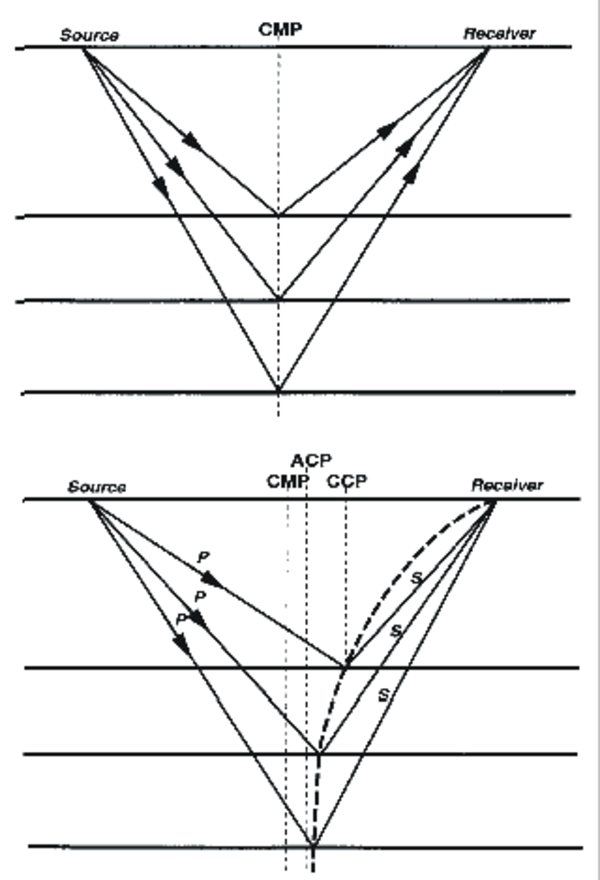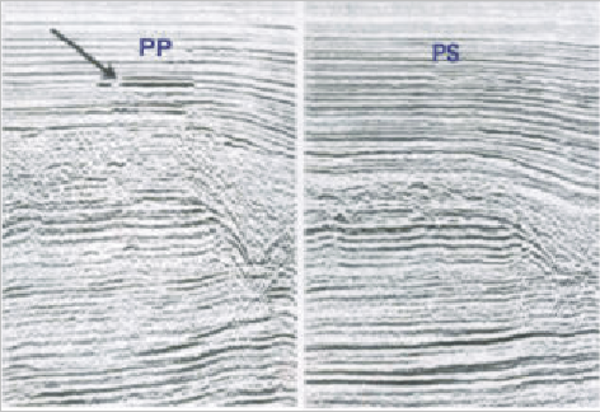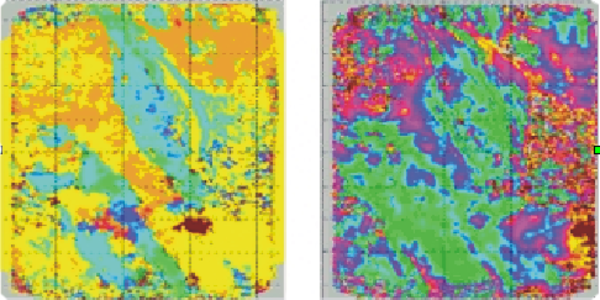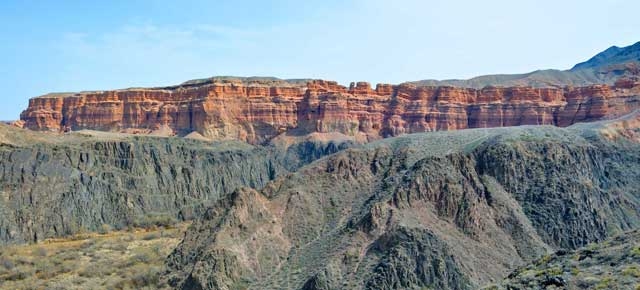Contact
DMT Petrologic GmbH & Co. KG
Karl-Wiechert-Allee 76
30625 Hannover, Germany
Phone: +49 511 5413917
E-Mail: info dmtpetrologic.com
dmtpetrologic.com
Converted Waves
Analyses of multicomponent data provides information about anisotropy and type of pore fluids. We have indirectly been estimating the shear properties from rocks for some time using AVO and elastic inversion methods. With multicomponent methods, however, we can not only directly estimate these properties, at the same time we get a better image than we get from P-wave processing. And all this at marginally extra cost!
Facts:
- P-waves travel faster than S-waves
- S-waves cannot exist in fluid, P-waves do
- S-waves are not greatly affected by pore fluids in rocks, P-waves are
- S-waves can be created by conversion of P-waves at rock property boundaries
- A P-wave source with 3-component geophones provides much more information about a reservoir than either P- or S-waves alone.

- Processing considerations:
- Rotation & positioning analysis
- CCP binning
- Statics solutions
- Velocity analysis (higher moveout corrections)
- Vp/Vs analysis
- Converted wave DMO and imaging

- Imaging applications:
- Through gas clouds, chimneys
- Higher S-wave than P-wave impedance changes
- Beneath salt or basalt

- Lithology applications:
- Fluid identification – bright spot validation
- Lithology discrimination / Poisson's ratio
- Mapping hydrocarbon saturation
- S-wave splitting - anisotropy
- Detecting and mapping fractures
